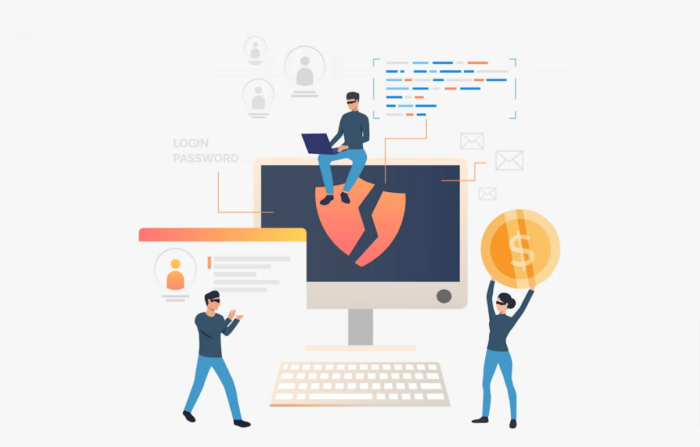Have you ever seen that pesky update notification pop up, hit the “remind me later” button, and then completely forgotten about it? It’s easy to think that those updates can wait, especially when we’re drowning in work or just plain busy. However, when it comes to cybersecurity, overlooking the importance of vulnerability and patch management can be a massive mistake for businesses.
According to a report from Ponemon Institute, in 2019, 60% of data breaches were linked to unpatched vulnerabilities, highlighting the critical nature of vulnerability and patch management in protecting your business. Trust me, when it comes to protecting your business, you definitely want to stay on top of this stuff. So, let’s dive into the world of vulnerability and patch management together, and I’ll show you why it’s worth your attention.
What is vulnerability and patch management?

Picture this: you’re the owner of a small business with limited resources to spend on cybersecurity. One day, your business experiences a cyber attack, and you realize that your outdated software is the root cause of the problem. This is where vulnerability and patch management come in.
Vulnerability and patch management refer to the process of identifying vulnerabilities in your software and deploying patches to address them. It’s a crucial aspect of cybersecurity that often goes overlooked. Just like how you regularly maintain your car to prevent breakdowns, you need to regularly maintain your software to prevent cyber attacks.
For example, let’s say you’re using a popular web browser that has a vulnerability. Cybercriminals can take advantage of this vulnerability to gain access to your computer and steal sensitive information. However, if the software vendor releases a patch to address the vulnerability, you need to make sure you install it promptly. By doing so, you’re protecting your business from potential cyber threats.
In short, vulnerability and patch management is not just a good cybersecurity practice, it’s a necessity for businesses of all sizes.
Why Is Vulnerability And Patch Management Important?
Vulnerability and patch management are the basic building blocks of a mature cybersecurity program. They act as the first line of defense in remedying vulnerabilities. However, given the ever-increasing volume and sophistication of cyber threats, a more proactive approach is necessary.
Cybercrime is on the rise, with organizations falling prey to exposure and exploitation. In fact, recent data breaches are typically due to threat actors taking advantage of vulnerable systems. The effects of such breaches are devastating, not just in terms of security, but also financially, with losses running into thousands or millions of dollars.
By 2025, the annual cost of cybercrimes worldwide is estimated to reach $10.5 trillion. The attack surface is constantly changing, with numerous internet-connected devices and systems in use today, creating opportunities for networks and applications to go unprotected.
As a result, organizations are more vulnerable than ever before, with an average of 130 security breaches per year, per organization. In essence, patch management and vulnerability management are crucial features for any security program today.
What are Vulnerabilities?

Vulnerabilities are weaknesses or flaws in software or hardware that can be exploited by cybercriminals to gain unauthorized access to systems, steal data, or cause damage. These vulnerabilities can range from simple coding errors to complex design flaws and can be found in any type of technology, from servers and networks to mobile devices and applications.
For example, a vulnerability may exist in a web application that allows an attacker to inject malicious code, enabling them to take control of the application and steal sensitive information. Another example is a vulnerability in a network protocol that allows an attacker to intercept and read data transmitted over the network.
Identifying and patching vulnerabilities is essential to protect against cyber threats and minimize the risk of a security breach. Regular vulnerability scanning and patch management can help organizations stay ahead of potential threats and maintain a strong security posture.
Types of vulnerabilities
Vulnerabilities are weaknesses or flaws in a system that cyber attackers can exploit to gain unauthorized access, steal data, or cause damage. These vulnerabilities can occur in various components of a system, including hardware, software, and network devices. Understanding the different types of vulnerabilities is critical to effectively managing them and protecting your organization from cyber-attacks.
Here are some of the most common types of vulnerabilities:
- Software vulnerabilities: These vulnerabilities are the most common and occur in software applications such as operating systems, web browsers, and other software that organizations use. Cyber attackers often exploit these vulnerabilities by injecting malicious code or scripts into the system, taking advantage of the software’s weakness. For example, the WannaCry ransomware attack exploited a vulnerability in Microsoft Windows systems to spread and infect other devices.
- Network vulnerabilities: Network vulnerabilities arise from security weaknesses in network devices, such as routers, switches, and firewalls. Cyber attackers can exploit these vulnerabilities by intercepting network traffic or gaining unauthorized access to network devices to steal or manipulate data. For example, the Heartbleed vulnerability affected many websites and allowed attackers to steal sensitive data, including usernames, passwords, and credit card information.
- Hardware vulnerabilities: Hardware vulnerabilities refer to security weaknesses in hardware devices, such as servers, laptops, and mobile devices. Attackers can exploit these vulnerabilities by physically accessing the device or remotely taking advantage of security flaws in the hardware components. For example, the Meltdown and Spectre vulnerabilities impacted computer processors, allowing attackers to steal sensitive information from the device’s memory.
- People vulnerabilities: People vulnerabilities arise when employees or users unintentionally or intentionally cause security breaches. For example, clicking on phishing emails, using weak passwords, or connecting to unsecured Wi-Fi networks. These vulnerabilities can cause significant damage to an organization’s security posture and lead to data loss, system downtime, and reputational damage.
Best Practices for Vulnerability and Patch Management
Effective vulnerability and patch management is crucial for any organization’s cybersecurity strategy. It involves identifying and mitigating vulnerabilities in software and systems and ensuring they are kept up to date with the latest security patches.
Here are some best practices for vulnerability and patch management that can help organizations improve their security posture.
Prioritize patches based on criticality: When it comes to patching vulnerabilities, not all patches are created equal. Some patches may fix minor bugs or improve functionality, while others may address critical security vulnerabilities that could potentially compromise your entire system. Therefore, it’s important to prioritize patches based on their criticality and potential impact on your organization’s security.
For example, if a new patch is released for a zero-day vulnerability that is actively being exploited by attackers, it should be considered a top priority and deployed as soon as possible.
Test patches before deployment: While it’s important to deploy patches quickly, it’s equally important to ensure that they don’t cause any unintended consequences or disruptions to your system. This is why it’s critical to test patches in a controlled environment before deploying them to production systems.
For example, you could set up a test environment that mirrors your production environment, deploy the patches there, and run a series of tests to ensure that they don’t break any critical systems or applications.
Automate patch management: Manually tracking and applying patches can be a time-consuming and error-prone process, especially in large organizations with multiple systems and applications. Automating patch management can save time, reduce human error, and ensure that patches are applied consistently across all systems.
For example, a patch management tool like JetPatch can automatically scan for vulnerabilities, deploy patches, and generate reports on patch status and compliance.
Implement a centralized patch management solution: Managing patches across multiple systems and applications can be a daunting task, particularly for large organizations. Implementing a centralized patch management solution can provide a single pane of glass for patch management, making it easier to track vulnerabilities, prioritize patches, and deploy them consistently across all systems.
For example, JetPatch provides a centralized platform for managing patches across Windows and Linux systems, as well as third-party applications like Java and Adobe.
Keep your systems up-to-date: Even if you have a robust patch management program in place, it’s important to ensure that your systems are always up-to-date with the latest patches and security updates. Attackers are constantly developing new exploits and vulnerabilities, so keeping your systems up-to-date can help prevent them from gaining a foothold in your environment.
For example, regularly checking for updates and applying them promptly can ensure that your systems are protected against the latest threats.
By following these best practices, you can ensure that your organization is protected against the latest threats and vulnerabilities, and maintain a strong security posture.
Conclusion:
In conclusion, vulnerability and patch management play a vital role in cybersecurity, and it’s essential not to underestimate their importance. Neglecting to properly manage vulnerabilities and patching can lead to severe consequences for businesses, including data breaches, financial losses, and damage to reputation.
By adhering to best practices such as prioritizing vulnerabilities, conducting regular system scans, and employing a centralized patch management solution like JetPatch, organizations can significantly reduce their risk of cyberattacks and maintain the security and stability of their IT infrastructure. At JetPatch, we recognize the significance of effective vulnerability and patch management and provide a comprehensive solution to help businesses stay ahead of their patching needs.
I hope this discussion has helped to emphasize the critical nature of vulnerability and patch management in cybersecurity. It’s not just a matter of routine maintenance, but an active measure to safeguard your business. So, the next time an update notification pops up, remember the importance of staying on top of those patches to ensure your organization’s cybersecurity remains strong.
Take the first step in protecting your business from cyber threats. Get a FREE Patch Assessment consultation from JetPatch experts.



